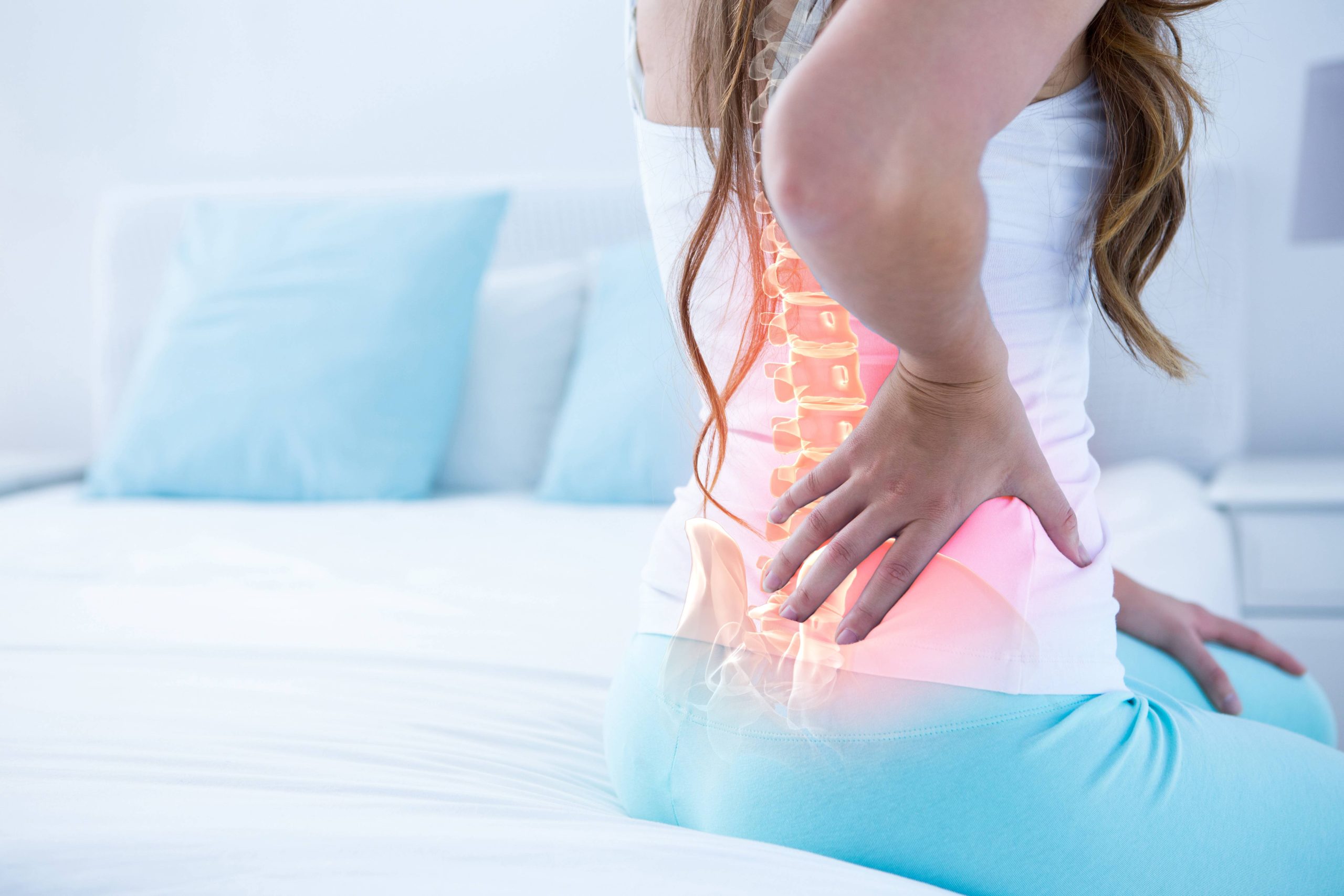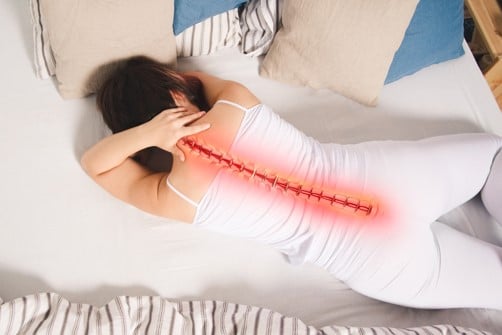The Ageing Spine
Back and neck pain, when do they pose a problem?

The Ageing Spine
Posted on Wed Jan 5, 2022
We sat down with Mr Caspar Aylott, one of the UK’s leading orthopaedic spinal surgeons. In this interview, we discuss how ageing can naturally affect our spine.
‘Mr Aylott’s stance for his patients is that surgery is the last resort and conservative treatments are effective in more than 90% of the patients he sees.’ – Oryon Develop
Mr Caspar Aylott : Consultant Spine Surgeon
The degenerative spine
It’s completely normal that with ageing, the spinal discs degenerate over time.
Are there common symptoms of degenerative disc disease?
The challenge for the expert is always to work out where the pain is coming from. Very often patients are quick to tell us ‘I’ve got a slipped disc’, or I’ve been told I’ve got degenerative disc disease’. And those three words sound quite dramatic. However, I think people have completely the wrong idea about what they mean.
Degenerative disc disease is a normal process
Degenerative disc disease is a normal process. It’s like grey hair and wrinkles. We’re all going to get it as we get older. However, it only becomes a problem when it starts causing pain and symptoms.
Is back pain a sign that the spine is degenerating?
The most common symptom you’d get from “degenerative disc disease”, if you want to use that terminology, would be back pain. However, there lies the challenge for the consultant because lots of other parts of the spine can cause back pain. So to be more specific, as a specialist, we must listen very carefully to how that pain is described to us. For instance, forward bending pains – if your pain is worse when you bend forwards, such as putting on shoes, socks, standing at the sink, leaning forwards when you’re brushing your teeth, those sorts of things.
There lies the challenge for the consultant because lots of other parts of the spine can cause back pain.
Forward bending pain is more likely to be associated with the discs at the front of the spine.
If someone develops a disc herniation, that can pinch a nerve and cause sciatica. In a way, that’s much easier to recognise. So, the short answer to the question, ‘Is back pain a sign that the spine is degenerating?’, is that discs at the front of the spine can cause back pain. Typically, that tends to worsen when we bend forwards and may be relieved when we bend backwards. Sometimes it’s more painful when you sit because you tend to load the disks at the front of the spine. As a consequence, sitting can often be uncomfortable for patients who have painful discs.
How do we recognise the difference between simple mechanical pain and serious pain?
The answer is almost all of us are going to get neck pain and back pain in our lives.
90% of us are going to have it at some stage. Most of the time, it’s what we call simple pain. By that, we mean it’s going to be self-limiting, it will last a period of time and then settle, but it’s not going to shorten our lives.
Cancer, history of injuries, night pain, neurological problems, and lower back pain – How to spot red flags
All doctors, in fact, any Allied Healthcare Professionals – whether its physiotherapists, osteopaths or chiropractors – who see patients face-to-face for assessments, should be familiar with red flags.
The type of red flags that we should think about could be: are they unwell with their neck or back pain? For example, have they got a fever? Have they got sweats? Are they losing weight? Are they not able to eat and have lost their appetite? Are they exhausted? So, they have all the features, which suggest there might be other things going on.

Another red flag might be a history of cancer. Maybe the woman has had breast cancer diagnosed and treated a couple of years ago, who then re-presents two years later with low back pain. That should raise a suspicion that something might be going on. And sometimes we see that this is a presentation of recurrent breast cancer, which has spread to the bones.
Another important red flag would be night pain; people who have constant, unremitting pain, which is worse at night and relentlessly continues throughout the night. That is a red flag in itself.
And of course, if there’s been some significant injury in the past, such as they’ve fallen off a horse or out of a window – you really shouldn’t miss the history of those things. However, those are very significant mechanisms of injury, and a specialist would want to have a low threshold for thinking this might be a more significant problem and would lead to further investigations.
Then there can be neurological problems. For example, the patient that presents with neck pain, but then also tells you that their arms aren’t working well, they’ve got pins and needles, numbness in their arms, weakness in their legs or imbalance.
I suppose the big one in the context of lower back pain would be if someone’s getting bilateral symptoms. They’ve got back pain, but they’ve also got sciatica going down both legs. That can often suggest a central problem.
What other red flags should physiotherapists and osteopaths be on the lookout for?
We teach our medical students, physiotherapists, and osteopaths to ask about symptoms affecting the bladder. Symptoms such as incontinence, loss of control, a loss of sensation, sexual dysfunction, any of those sorts of things would be a red flag and would merit for referral or urgent investigation. That’s in the context of cauda equina syndrome (CES).
CES is a rare condition, but it’s one that you don’t want to miss – whether you’re a physiotherapist in the clinic assessing a patient for the first time, or a spine consultant doing a similar thing. If missed, that’s going to get the practitioner, as well as the patient, into a lot of trouble.
Are there ways to maintain a healthy and happy spine?
Yes, is the short answer.
If we think about our back, it’s incredibly complicated and we’ve got lots of levels. We’ve got seven levels in the neck, twelve in the thoracic spine and five in the lumbar spine. There are multiple joints, discs, muscles and ligaments. It’s a very complex, coordinated structure. So, it’s not at all surprising that at times things can go wrong, and of course, most of us do absolutely nothing to look after our backs during our lives.
So, it’s no surprise at all that we run into problems. When I see patients in the clinic, a big part of that is trying to teach them about their backs and help them understand how our spines work and how they change as our backs naturally age.
It is important to note that as our spines age, which is a normal process driven by our genetics, we become more reliant on the muscles that surround our backs. The core is our back muscles and our stomach muscles. All those muscles are what we call the secondary stabilisers of the spine.
The ageing spine
As we get older, our spines age and we become more reliant on those secondary stabilisers. These muscles wrap up our spine and keep it in a superb position as we move around. That’s the rationale for doing exercises – to keep those muscles nice and strong.

When you do things like Pilates and yoga, those types of exercises are all trying to stretch and strengthen our very important core structures and muscles.
Those are the types of exercises we strongly recommend. We talk about doing daily back exercises for 10 minutes, morning and night after you’ve brushed your teeth.
We also encourage people to keep their backs moving as much as possible. For instance, office workers spend a lot of time sitting at a desk, working at a screen etc. It’s so important to keep their backs moving, at least every 30 minutes, just getting up, moving around the room, and stretching, just for a few seconds. Your spine and discs will thank you for doing that.
The use of imaging modalities in investigation and diagnosis of back and neck pain.
You can read a long report from radiologists which provide a lot of information, but MRIs do not tell us where the pain is coming from.
Most of the things that are described on an MRI scan are not relevant in the context of back pain. This is where an expert comes in. The job of the expert is to make sense of this type of imaging and, in the context of the patient’s symptoms, to work out, what is important and where is the pain coming from?
Specialist imaging, like MRI, is best arranged by a specialist because they are the person who knows what to request; they are best placed to make sense of it and explain what it means to the patient.
There is a misconception that the answer is just in the MRI report; that is not the case. Most of the things we see on an MRI scan are incidental, asymptomatic, and misleading. So, we must treat MRI very, very carefully.
Much more important is the old-fashioned skills of history taking asking the patient questions, trying to understand the pain, and examining the patient. Diagnosis is critical in all of this; we must work out where the pain is coming from. That’s how we form a proper diagnosis.
It’s only when we have this that we can think about prognosis.

At Oryon Imaging, we have high-quality CPD courses delivered by expert healthcare professionals on a variety of topics, including spinal conditions.
Share this article
Most Recent
All you need to know about getting a private chest X-ray
Posted on Thu Feb 22, 2024
Posted on Wed Jan 17, 2024
Posted on Mon Dec 18, 2023
Stay up to date
If you’re interested in keeping up with what we’re doing, just leave your email address here and we’ll send you periodic newsletters and other updates.






